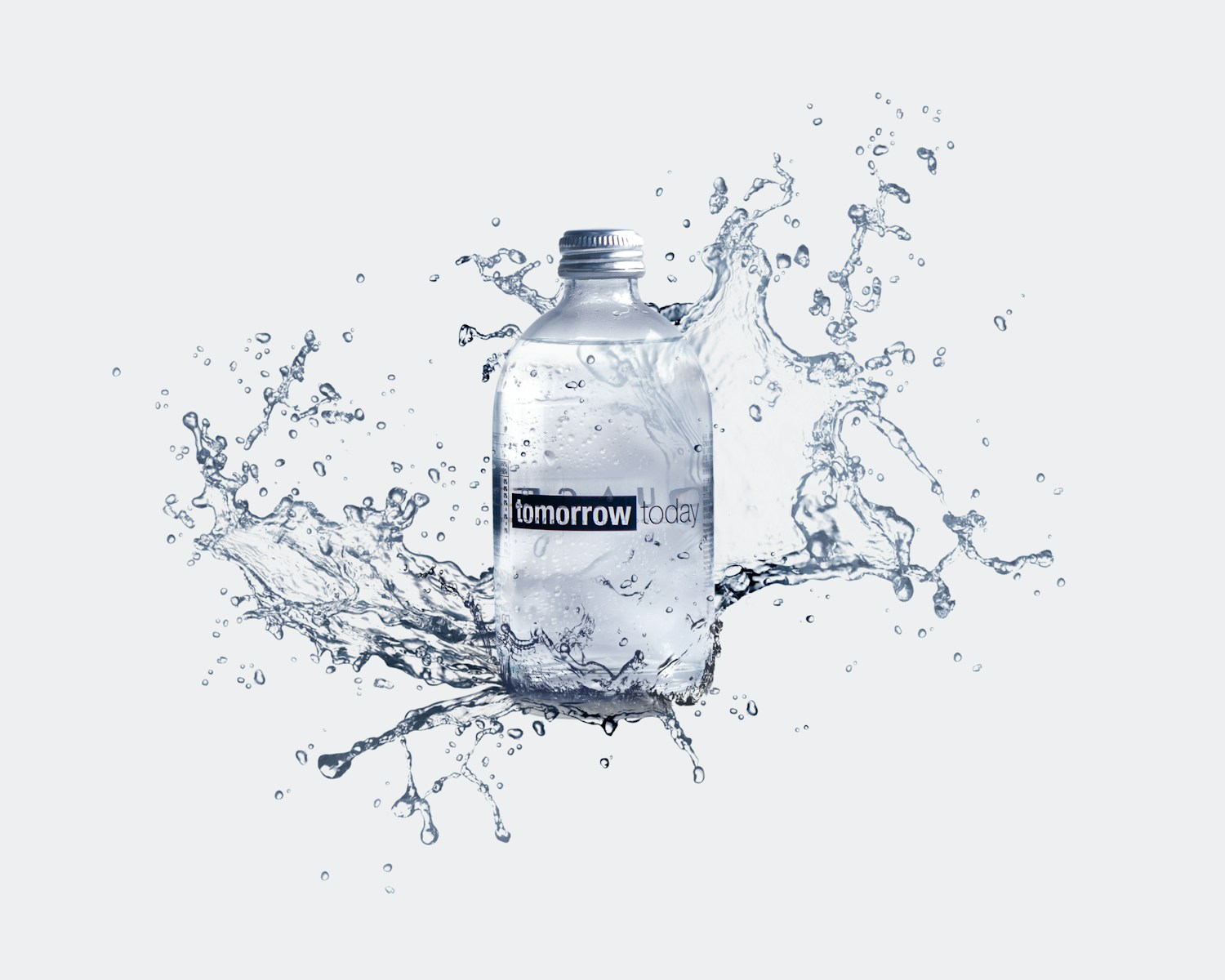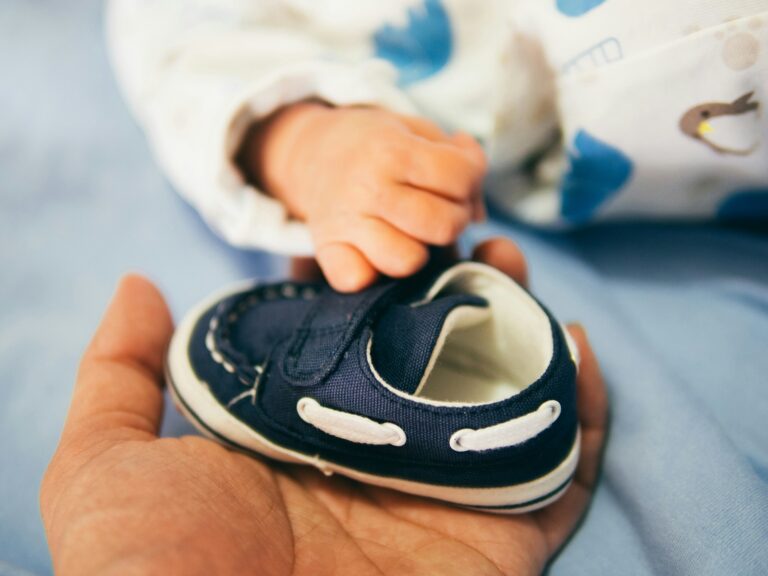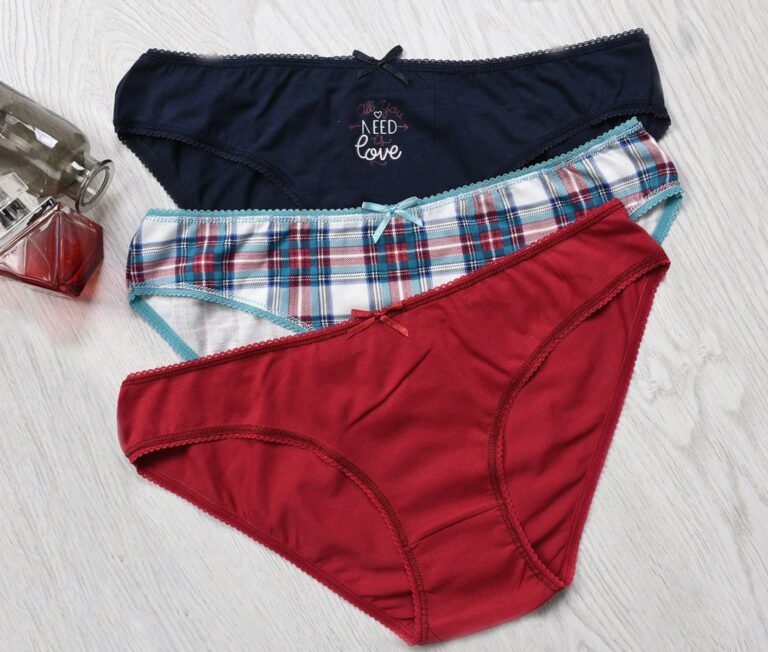How to Say Sparkling Water in Spanish: Key Terms and Tips
Imagine you’re on a sun-soaked terrace in Barcelona, the kind where the scent of fresh tapas wafts through the air and laughter echoes off the cobblestone streets. You’re parched from exploring the city’s hidden gems, and all you crave is a refreshing drink. You spot a waiter and confidently order a glass of water, but what you really want is that effervescent delight—sparkling water.
Wouldn’t it be handy to know that in Spanish, you simply ask for “agua con gas”? It’s a small phrase, but it can make a big difference in your travel experience. Whether you’re exploring a bustling market or relaxing at a beachside café, knowing how to ask for “agua con gas” not only quenches your thirst but also adds a splash of local flavor to your adventures.
So, let’s jump into the nuances of ordering sparkling water in Spanish and make your next trip even more delightful.
The Main Way to Say Sparkling Water in Spanish
Ever found yourself at a charming Spanish café struggling to order sparkling water? Knowing how to say sparkling water in Spanish adds a delightful local touch to your experience. Let’s explore the term and its intricacies.
“Agua con Gas”: The Most Common Term
The phrase agua con gas literally translates to water with gas. This simple term will help you navigate menus and conversations with ease.
Literal Translation and Meaning
Agua con gas means water with gas. It describes the carbonation process that gives the water its fizz. Saying this is a surefire way to get that refreshing sparkling water you’re craving.
Pronunciation Guide (with Phonetic Spelling)
To order agua con gas confidently, here’s how you can pronounce it:
Spanish Term | Phonetic Spelling |
|---|---|
Agua | ah-gwah |
Con | kohn |
Gas | gahs |
Practicing these stops any pronunciation hiccups.
Usage Across Different Spanish-Speaking Countries
You’ll find agua con gas understood and used from Mexico to Spain to Argentina. No need for regional variations here. It’s a universally recognized term in Spanish-speaking countries.
Examples of Using “Agua con Gas” in Sentences
Let’s put agua con gas into action. Here are some handy phrases:
Next time you’re abroad or practicing Spanish locally, drop agua con gas into your conversation. It’s simple, effective, and adds a splash of authenticity.
Regional Variations for Sparkling Water in Spanish
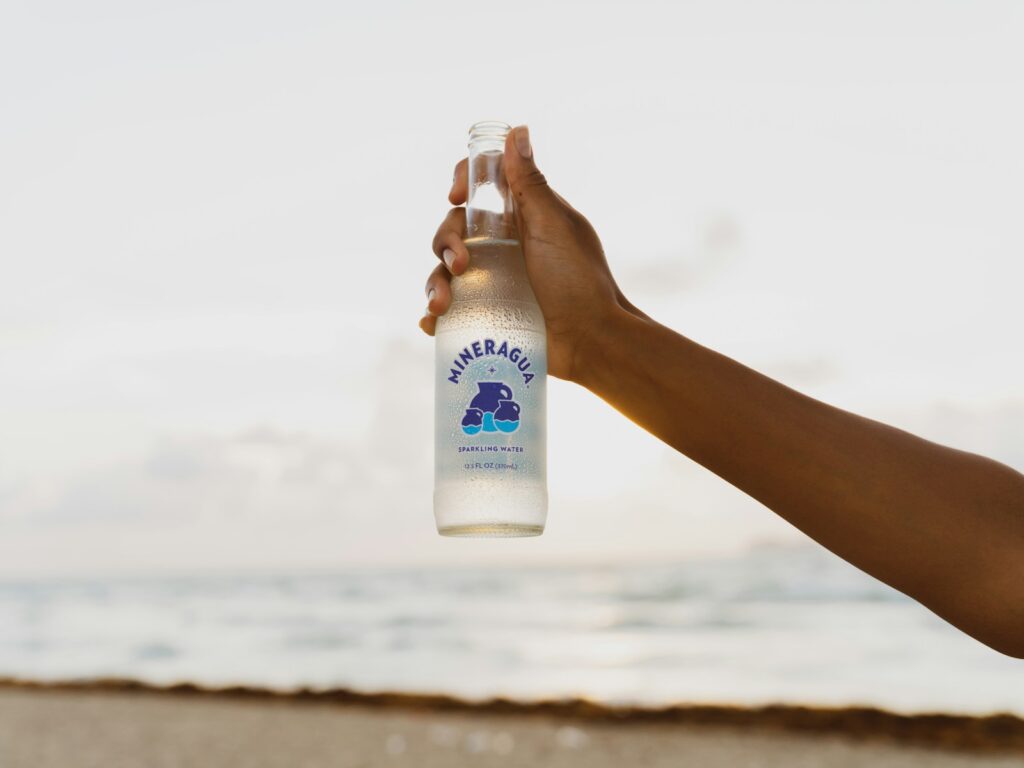
When it comes to ordering sparkling water in Spanish-speaking countries, you might notice quite a few regional variations. Let’s jump into the different ways to say sparkling water and where you might hear each one.
“Agua carbonatada”
Where It’s Commonly Used
Agua carbonatada isn’t something you’ll hear often in everyday conversation. You might encounter it on product labels or in more formal contexts.
Pronunciation and Usage
Pronounced as /ˈaɣwa karβonaˈtaða/, agua carbonatada refers to water with artificial carbonation added. While not a term you’d casually throw into your order at a café, it’s useful when you see it on labels and want to double-check the contents.
“Agua mineral con gas”
Differences from “agua con gas”
Agua mineral con gas specifically distinguishes sparkling mineral water from plain mineral water. While agua con gas is a more general term for any sparkling water, agua mineral con gas ensures you’re asking for mineral water that’s fizzy.
When to Use This Term
You’ll find agua mineral con gas more commonly used in certain Latin American countries. It’s handy to use when you’re at a restaurant or store and want to specify that you prefer sparkling over still mineral water. Imagine you’re browsing a menu in Argentina; asking for agua mineral con gas leaves no room for confusion.
“Soda” in Some Latin American Countries
Countries Where “Soda” Means Sparkling Water
In Argentina and a few other Latin American countries, soda is the go-to term for sparkling water. Pronounced /ˈsoða/, it’s a word you’re likely to hear in restaurants and stores.
Potential Confusions to Avoid
Watch out for potential mix-ups. Since soda in many countries refers to soft drinks, saying soda in places outside Argentina might result in receiving a cola instead of fizzy water. If unsure, pairing the term with “agua” (like agua con gas soda) can clarify your request.
Term | Common Usage | Pronunciation | Specific Usage |
|---|---|---|---|
Agua con gas | Mexico, Spain, most of Latin America | /ˈaɣwa kon ˈɣas/ | Widely used for general sparkling water |
Agua carbonatada | Labels, formal settings | /ˈaɣwa karβonaˈtaða/ | Refers to artificially carbonated water |
Agua mineral con gas | Some Latin American countries | /ˈaɣwa mineˈɾal kon ˈɣas/ | Distinguishes sparkling mineral water |
Soda | Argentina and some Latin countries | /ˈsoða/ | Common term for sparkling water, can mean soft drinks elsewhere |
So next time you’re ordering sparkling water in a Spanish-speaking country, you’ll choose the right term with confidence.
How to Order Sparkling Water in Spanish
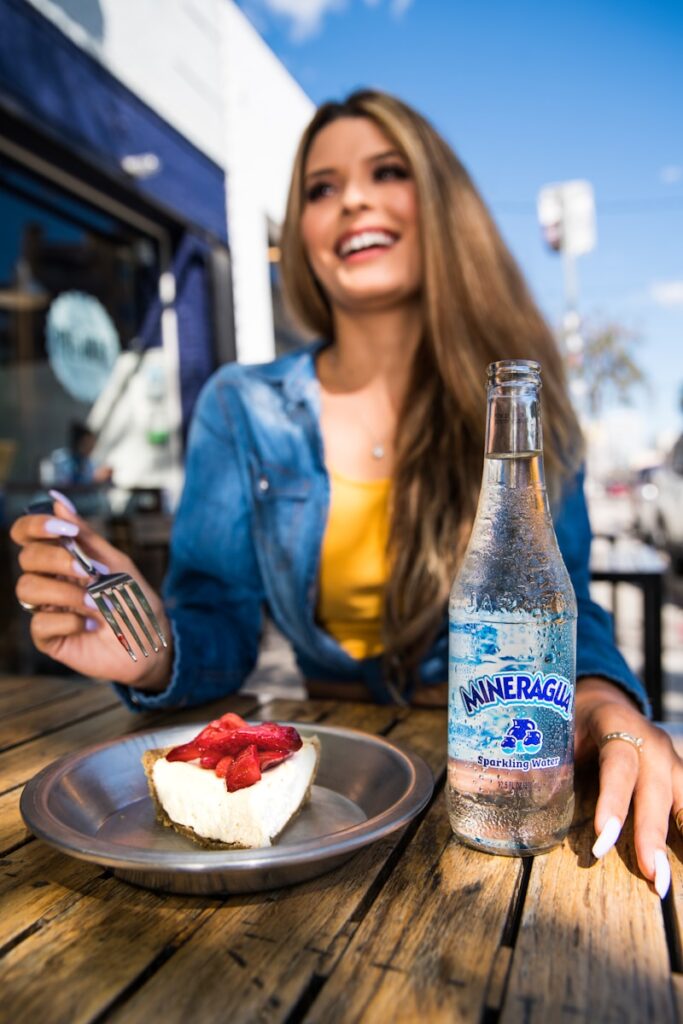
Want to enjoy a refreshing sparkling water while traveling in a Spanish-speaking country? Don’t worry, it’s easier than you think! Let’s jump into some handy phrases and tips.
Basic Phrases to Ask for Sparkling Water
“Me gustaría un agua con gas, por favor”
Imagine sitting at a sun-soaked café in Spain. You need a cool drink. Use “Me gustaría un agua con gas, por favor” to say, “I would like a sparkling water, please.” It’s polite, clear, and easy to remember.
“¿Tienen agua con gas?”
Perhaps you’re in a busy market in Mexico City. Use “¿Tienen agua con gas?“, which means “Do you have sparkling water?” This is perfect when you’re unsure if they have it. Short, sweet, and straight to the point.
Specifying Sparkling Water vs. Still Water
Sometimes, you’ll need to specify exactly what type of water you want. This table will help you navigate those moments.
Sparkling Water | Still Water | How to Say It |
|---|---|---|
Agua con gas | Agua sin gas | “I prefer sparkling water” |
¿Tienen agua carbonatada? | ¿Tienen agua natural? | “Do you have carbonated/still water?” |
In Mexico, the term “agua mineral” is commonly used for sparkling water. So if you’re in Guadalajara and want something fizzy, say “Me gustaría un agua mineral, por favor.”
So next time you’re savoring tapas in Barcelona or munching tacos in Mexico, you’ll be ready.
Expanding Your Spanish Vocabulary: Beyond ‘Sparkling Water’
You’ve mastered saying agua con gas for sparkling water, but why stop there? Boost your Spanish skills with terms and phrases that go beyond the basics. This section will jump into how to describe sparkling water, ask for flavored versions, and even use advanced phrases.
Describing Sparkling Water
“Con burbujas” (With Bubbles)
When you want to emphasize the fizzy aspect, say con burbujas. Imagine you’re at a street café in Madrid, the waiter asks what type of water you’d like, and you confidently reply, “Un agua con burbujas, por favor“. You just made your order specific and delightful!
“Efervescente” (Effervescent)
Use efervescente to sound like a sparkling water connoisseur. This adjective captures the lively quality of carbonated water. Picture yourself explaining to friends why you love sparkling water: “Me encanta el agua efervescente“. Now, you’re not just drinking; you’re enjoying an effervescent experience.
Related Terms for Other Carbonated Drinks
Spanish offers a rich vocabulary for carbonated beverages. Here’s a list for quick reference:
English Term | Spanish Term |
|---|---|
Soda | Refresco |
Soft drink | Gaseosa |
Seltzer water | Agua de seltz |
Tonic water | Agua tónica |
These terms not only expand your vocabulary but also make you sound more local when ordering a drink.
How to Ask for Flavored Sparkling Water
Craving something zesty or fruity? Ask for agua con gas con sabor. For instance, if you want lemon-flavored sparkling water, say, “¿Tienen agua con gas con sabor a limón?“ Paying attention to flavor preferences makes your request clear and satisfying.
Advanced Phrases and Idioms Related to Sparkling Water
Taking your Spanish to the next level involves using advanced phrases. Here are examples:
Why care about these phrases? They display a nuanced command of the language. It’s not just about utility; it’s about connecting with people authentically.
Common Mistakes When Saying Sparkling Water in Spanish
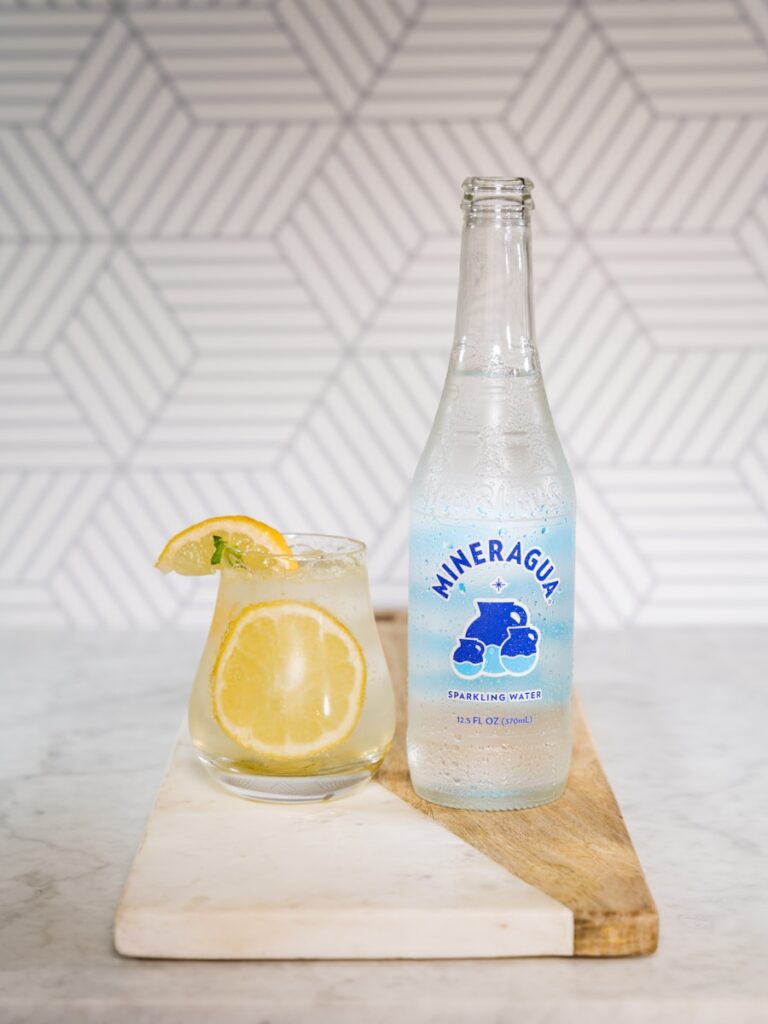
You’re at a cozy café in Madrid, craving refreshing sparkling water. But what if you order the wrong thing? Let’s make sure you get exactly what you want.
False Cognates to Avoid
False cognates can trip you up. “Soda” might seem like the right word, but in Spanish, it usually means a sweet, fizzy drink like 7 Up or Sprite. Not what you want when you’re asking for sparkling water. The word “gaseosa” can also mislead. In Spain, it often refers to a sweetened sparkling water, while in Argentina or Colombia, it could mean plain sparkling water.
Misunderstandings with “Soda” or “Gaseosa”
Misunderstandings often arise with “soda” or “gaseosa”. Ordering “soda” can result in flavored fizzy drinks, especially if you’re expecting plain sparkling water. It’s better to ask for “agua con gas” or “agua carbonatada” for unmistakable sparkling water. These are more precise and won’t leave you with a sugary surprise.
Regional Differences to Be Aware Of
Regional terms for sparkling water vary. In Mexico, the common terms are “agua con gas” and “agua mineral”. Head over to Spain, and “agua con gas” is your go-to term. Yet, don’t be surprised if “gaseosa” crops up on the menu as a sweetened beverage option. Keeping these regional differences in mind ensures you get the drink you want without any misunderstandings.
Term | Meaning in Different Regions |
|---|---|
Soda | Sweet, fizzy drink (7 Up, Sprite) |
Gaseosa | Sweetened sparkling water (Spain) |
Agua con gas | Sparkling water (General) |
Agua mineral | Sparkling water (Mexico) |
Agua carbonatada | Sparkling water (General, less common) |
Conclusion
Mastering the right terms for sparkling water in Spanish can make your travel or dining experiences much smoother. Using phrases like “agua con gas” or “agua carbonatada” ensures you get exactly what you’re looking for without any mix-ups. Remember to be mindful of regional differences and avoid common pitfalls like confusing “soda” and “gaseosa.“
Focusing to these nuances, you’ll not only improve your Spanish but also connect more authentically with locals. So go ahead and confidently order that sparkling water on your next adventure!
Frequently Asked Questions
What is the best way to order sparkling water in a Spanish-speaking country?
The best way to order sparkling water is to say “agua con gas.” This term is widely understood and used.
What are some advanced terms for sparkling water in Spanish?
Advanced vocabulary includes “con burbujas” (with bubbles) and “efervescente” (effervescent).
Are there any common mistakes to avoid when ordering sparkling water?
Yes, avoid using false cognates like “soda” or “gaseosa” as these can refer to soft drinks or soda pop.
Is there a difference in terminology for sparkling water across Spanish-speaking regions?
Yes, terminology can differ. For example, “agua con gas” is commonly used, but “agua carbonatada” can also be heard in some areas.
How do you ask for flavored sparkling water in Spanish?
To ask for flavored sparkling water, you can say “agua con gas con sabor a [flavor],” for example, “agua con gas con sabor a limón” (lemon-flavored sparkling water).
